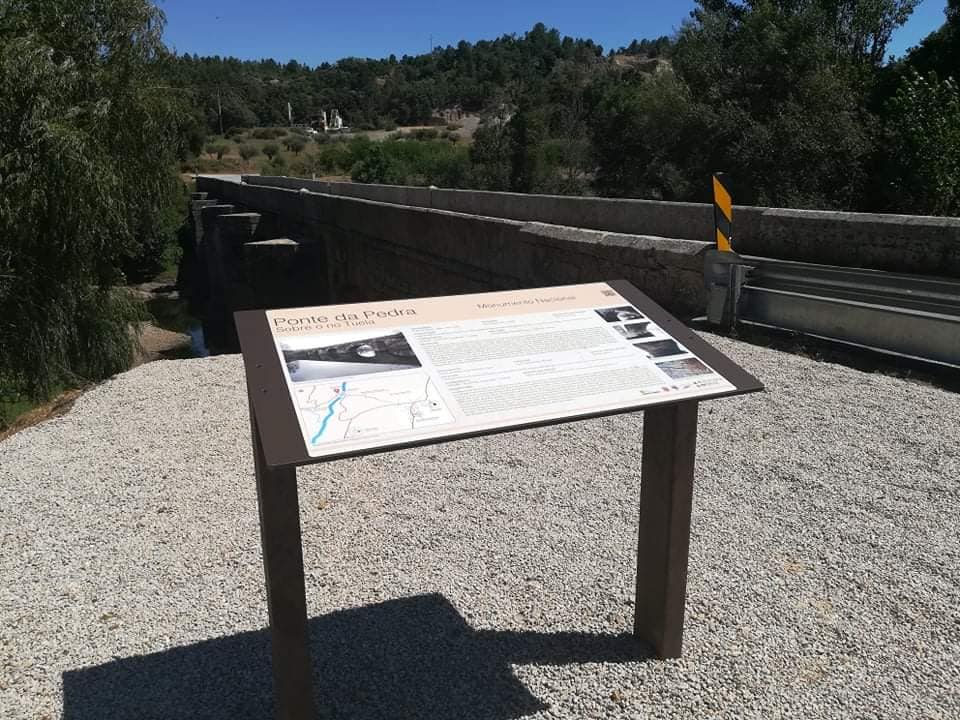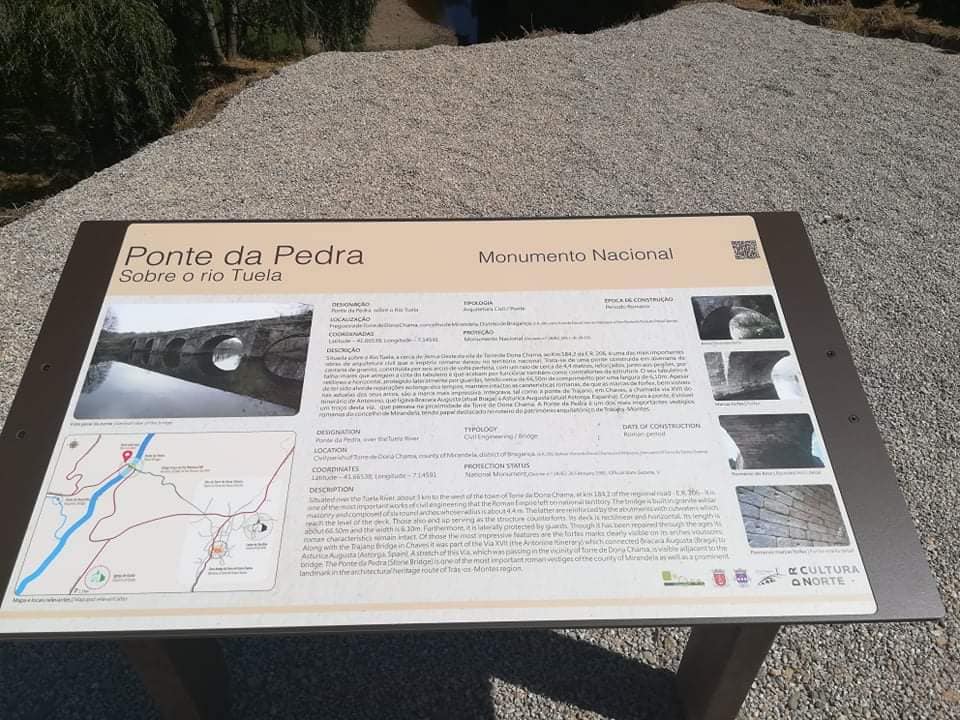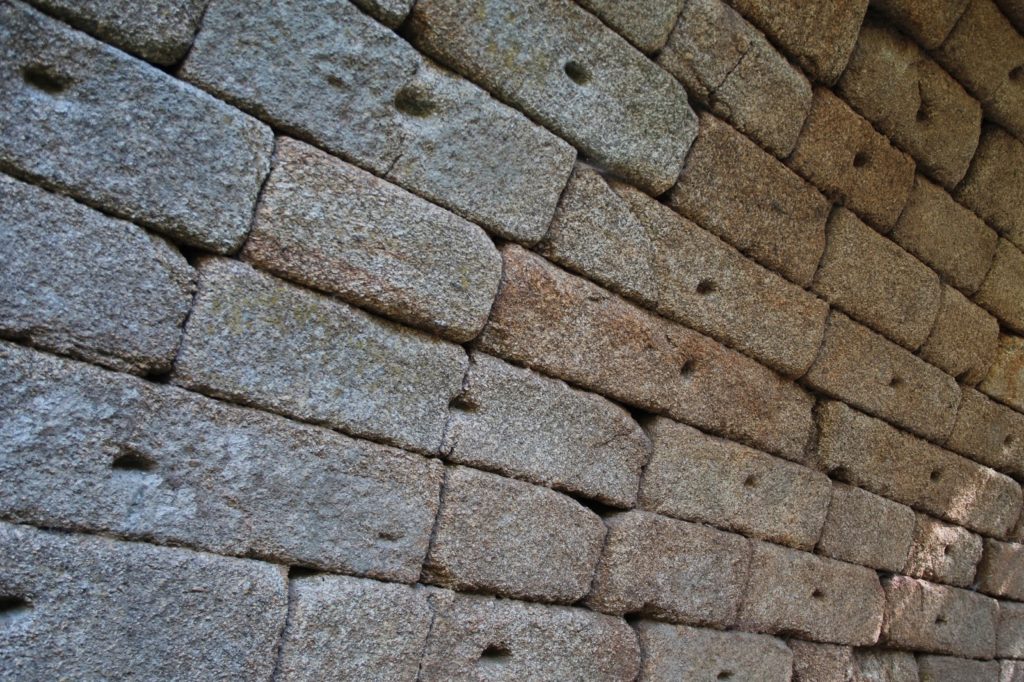In 1179, the first king of Portugal, Dom Afonso Henriques, stipulated the delivery of 300 modios morabitinos for the “Ponti Dorii”, launching the project to build a bridge over the River Douro. The remains of this bridge were still visible in the 16th century when Rui Fernandes wrote his manuscript entitled “Descrição do terreno ao redor de Lamego duas léguas [ 1531-1532 ]“, currently in the Municipal Library of Porto, which reads:
“Item between this ferryboat of Bernaldo, and that of Porto de Rey are some fine pillars of a bridge that the Queen Donna Mafalda say she ordered to be made, which are two in the middle of the Douro of very great height, and very wide foundation, that the two that are in the river, in this month of May will be ten palms uncovered, and in the summer will be twenty palms and more, and there are two others outside, one on this side, and another on the other side. These pillars have already been doubled in height, and they broke them down and make fishing grounds out of them” (translation of ms. 547, fl 9).
The pillars of the old bridge were therefore still very visible in his time, although they had already been heavily collapsed: “The arch on one side has already collapsed. There is much broken stone on the hill, and you will find on the hills many mason stone tools, and wedges, and levers, which were left there” (fl. 9).
He also calls for taxes to be levied on the neighboring villages in order to complete the work, “because the majority of it has been done” and because there was still a lot of “broken stone” ready to be used to complete the work:
“Our Lord the King could very well order this half bridge to be built with the payment of two reis to each inhabitant twenty leagues around, and in six or seven years, or less, it could be done without oppression, and it would be a very noble thing” (fl. 9).
However, the work would never be finalized and what remains of these pillars were submerged after the construction of the Carrapatelo dam in 1972, but there are reports from that time mentioning the remains of one of the pillars in the riverbed (Resende. 2014: 423).
Moreover, we have precise information from the fifteenth-century author about its location when he writes that “this work is below a place, that they call Barqueiros moreover that they call Barrô” (fl. 9v), about 18 km from Porto Manso (“from Peares to Porto Manço there are three leagues“, fl. 10), which allows us to estimate its approximate location in the meander of the river between Barqueiros and Barrô, where the riverbanks are narrower (see image).
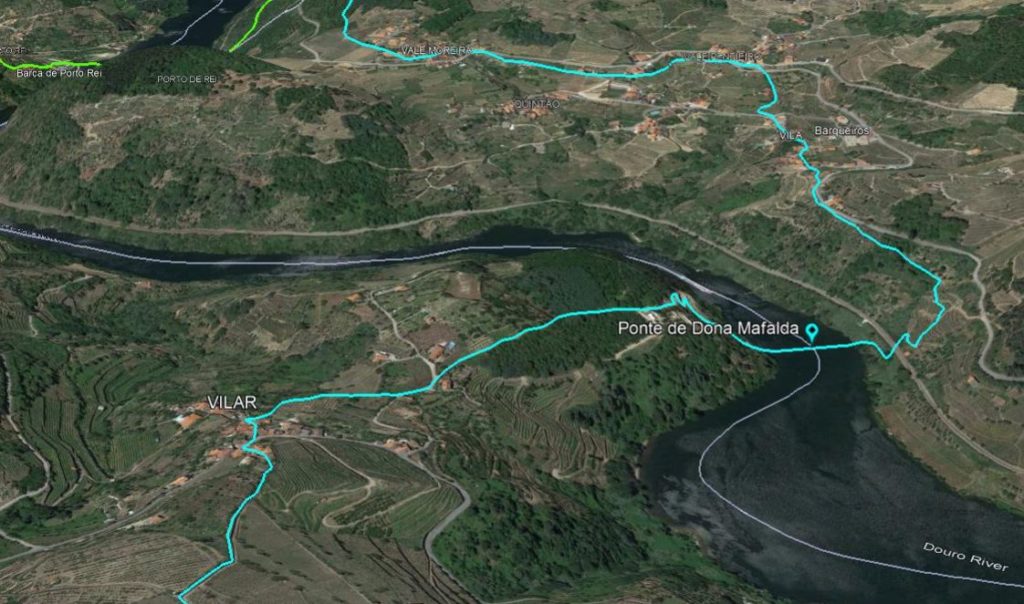
Although Rui Fernandes alludes to the legend of the death of the queen’s son when trying to cross the bridge, justifying this way the abandonment of its construction, we cannot exclude the hypothesis that it was finished and that its destruction was later, possibly due to a flood of the river, not least because the chosen location does not seem to be the most suitable for the construction of a bridge, the Douro being such a tumultuous river, and even less so the accesses to the bridge that would have to overcome the steep cliffs from this location.
In his “Elucidário…”, Friar Rosa Viterbo seems to follow this line by referring to documents from the Salzedas Monastery of 1205 containing the will of Dona Sancha Bermudes where it says that she had an estate “at the Douro Bridge”, as well as in another document from 1216, where she donates to the Monastery of Paço de Sousa everything she owned in Barrô and “near the Douro Bridge” (Viterbo, 1799: 227). Thus, it is possible that the bridge was still operational in that period, as Viterbo suggests, serving as an alternative to crossing the Douro at Porto de Rei from the road that connected Marco de Canaveses to Lamego (see https://viasromanas.pt/index.html#porto_de_rei_lamego).
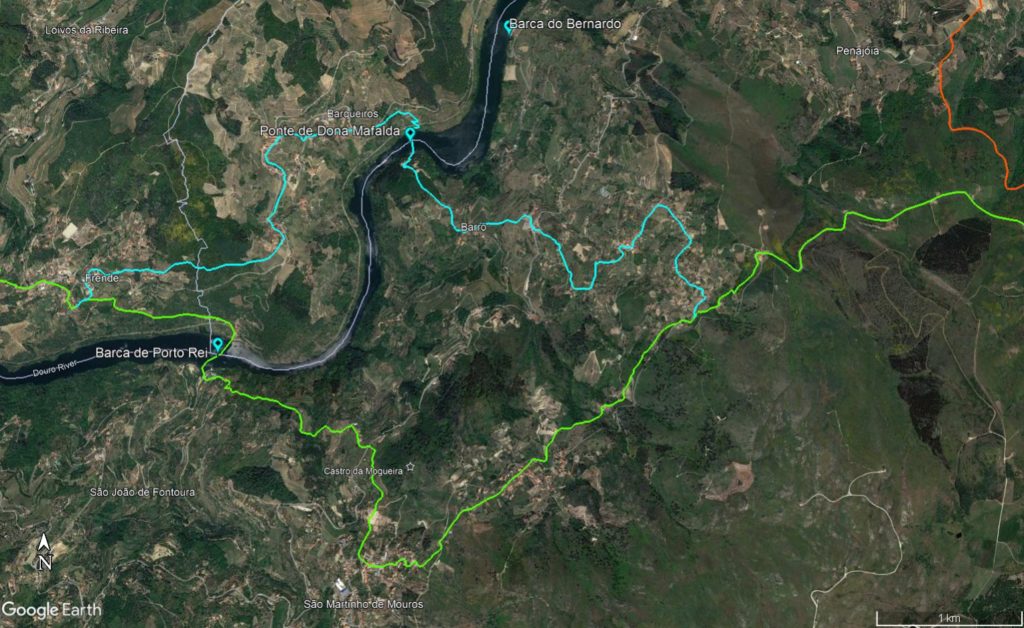
What is certain is that the dream of building a bridge over the Douro River ended in ruin, and until the 19th century all crossings of the river were provided by ferries. The medieval Douro bridge was a failed project whose implications were felt for many years, and even today there is stil no bridge in the stetch of the river between Régua and Resende, and the new Ermida Bridge, near the latter, was only inaugurated in 1998!
_______________________________________
Bibliography
FERNANDES, Rui (1531-1532) – “Descrição do terreno ao redor de Lamego duas léguas [ 1531-1532 ]“. Caleidoscopio, Ed. Amândio Barros (2012).
RESENDE, Nuno (2008) – “Ponte da Veiga: Lousada“. In ROSAS, Lúcia, coord. cient. – Rota do Românico, 2014. Vol. 2, 419-431.
VITERBO, Frei Joaquim de Santa Rosa de (1799) – “Elucidário das Palavras Termos e Frases”(…). Lisboa: Typographia Regia Silviana (1º Edição), vol. 2.


